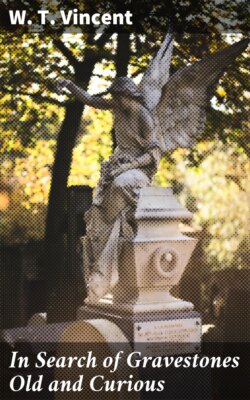Читать книгу In Search of Gravestones Old and Curious - W. T. Vincent - Страница 13
На сайте Литреса книга снята с продажи.
THE EVOLUTION OF GRAVESTONES.
ОглавлениеTable of Contents
Although there may be no expectation of discovering the germ of the pictorial or allegorical gravestone, a section of the samples collected for this essay may be displayed to shew the earlier forms in which the ruder class of masons prepared their sculptured monuments for the churchyard. There is little doubt that the practice originated in an endeavour to imitate on the common gravestone the nobler memorials of the churches and cathedrals, the effort being more or less successful in proportion to the individual skill of the artist. The influence of locality, however, must always be a factor in this consideration; for, as a rule, it will be found that the poorest examples come from essentially secluded places, while localities of earlier enlightenment furnish really admirable work of much prior date. Take, for instance, that most frequent emblem, the skull. I have not sought for the model by which the village sculptor worked, but I have in my note-book this sketch of a skull, copied from a sixteenth-century tomb at Frankfort on the Maine, and there are doubtless a vast number equal to it in English cathedrals and churches of the same period.
FIG. 9.—AT FRANKFORT, GERMANY.
Regarding this as our ideal, the primitive work which we find in rural localities must be pronounced degenerated art. Generally speaking we may assume that the carver of the stately tomb within the church had no hand in the execution of the outer gravestone; but that quite early there were able masons employed upon the decoration of the churchyard headstone is shewn in many instances, of which the one presented in Fig. 10 may serve as a very early specimen.
